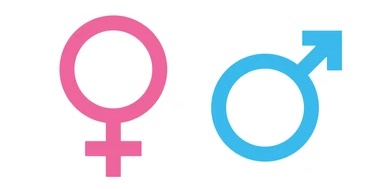Closing the Gender Gap Will Need More
Although closing the gender gap is one of the 17 sustainable development goals (SDGs), achieving gender equality and empowering all women and girls in the world by 2030 remains a herculean task. In many places around the world, achieving equal rights for men and women is not necessarily perceived as a condition for socio-economic progress. Consequently, women are not only being shut out from the discourse of societal development; economies where the gender gap yawns wide also do not get the opportunity to realize their full socio-economic potential.
“At the current rate of progress, it is estimated that it will take up to 286 years to close gaps in legal protection and remove discriminatory laws, 140 years for women to be represented equally in positions of power and leadership in the workplace, and 47 years to achieve equal representation in national parliaments,” states the recent progress update on this SDG.
If the advocacy for gender parity is to be effective and sustainable, women must have equal representation at every decision-making level of government, as well as in workplaces and civil society. This will help the formation of policies that prioritize the adoption and protection of equal rights among men and women, enabling the development of an inclusive society.
There may even be a business argument towards narrowing the gender gap, particularly in the boardroom. The Peterson Institute for International Economics in 2020 reported a correlation between the presence of female executives and profitability. Additionally, research also reveals that having women board members is correlated with a greater focus on ESG strategy in the company.
Pandemic Disruption
Yet certain global events have frustrated the progress of closing the gender gap. The onslaught of the pandemic, for example, has devastated the progress made on gender parity. Amid the pandemic, it became significantly difficult for women to continue working from home while home-schooling children and completing their household chores.
The pandemic also had a disproportionate impact on women’s employment, leading to job losses and challenges in balancing work and caregiving responsibilities. One study by McKinsey reveals that “one in four women are considering leaving the workforce or downshifting their careers versus one in five men.”
Working mothers, women in senior management positions and black women experienced some of the largest challenges amid the pandemic. Women felt more exhausted, burned out and under pressure than men. Women in emerging economies struggled more due to lack of advanced opportunities, as well as stalled growth because of the loss of social connections with colleagues. All this further aggravated the physical and mental health concerns of women.
The pandemic has also significantly reduced economic opportunities for women. The global economic slowdown has reduced job opportunities for all, women particularly. Businesses are amid massive job cuts, further lowering chances for women to recover.
Address the Gap
Addressing the gender gap post-pandemic will require collective effort from multiple stakeholders. Here are some crucial steps that can be taken to address this:
- Promoting equal access to quality education, particularly for girls, including in remote or disadvantaged areas. Better education will further provide women with the knowledge and skills necessary to pursue higher education and career opportunities.
- Closing the digital divide to ensure that women have equal access to digital technologies and are able to participate equally in furthering the digital economy.
- Amending or eliminating any discriminatory laws and practices that hinder women’s rights and opportunities. Laws should address gender-based violence, discriminatory inheritance laws and restrictive labor laws.
- Crafting and implementing policies that increase women’s representation in leadership positions in the public and private sectors, including in politics, boardrooms and executive positions.
- Crafting and implementing policies that promote women’s economic empowerment, such as equal pay for equal work, flexible work arrangements and support for women’s entrepreneurship. Companies may even be encouraged to prioritize gender diversity and inclusion in their hiring and promotion practices.
- Businesses should also create positive work environments that enable women to balance their work and caregiving responsibilities. Companies should allow flexible work arrangements and favorable parental leave policies.
- Governments should also invest in healthcare, education and social welfare programs that prioritize gender equality and women’s empowerment.
- Key stakeholders such as governments, businesses and contemporary influencers should engage in public awareness campaigns and educational initiatives that challenge gender stereotypes and promote a culture of gender equality.
Gender-positive Initiatives
Amid countries taking up several initiatives in closing their gender gaps, one in particular shines the most. Iceland has been a pioneer in closing the gender pay gap. In 2018, Iceland introduced the first policy in the world requiring companies and institutions with more than 25 employees to prove that they pay men and women equally for a job of equal value. Using a job evaluation tool called the Equal Wage Management Standard, companies that succeeded in showing that they follow an equal pay system received certification from the Iceland government. Starting from 2020, Iceland made it mandatory for companies to have this certification, without which they incur a daily fine.
Success stories in gender equality are not exclusive to developed economies. Developing countries such as Nicaragua are making strides in increasing access to education for girls. The country has developed a strategic education plan that aims to develop quality universal primary and secondary education while increasing the participation of boys and girls in early childhood education. It has recently allocated a grant of US$7.5 million financed by the World Bank with a loan of US$55 million to improve teaching practices in initial education, primary and secondary at the national level and improve the physical conditions of school infrastructure to provide dignity and comfort for girls.
A world that belongs both to men and women—where women are fully involved in conversations that affect their lives, where women’s rights are cherished and protected, and where women enjoy socio-economic opportunities equal to their male peers—is a world poised to overcome its most difficult development problems. Closing the gender gap may well be a monumental task, but it is one worth pursuing for the benefit of the greater global community.
Photo Caption: The male and female symbols



